
Research shows that hand drying is as important as hand washing in the prevention of COVID-19 and other infections
It is common knowledge that washing your hands is a key step in guarding against the spread of germs. But what happens after people wash their hands? Let’s explore the second (and sometimes overlooked) part of the handwashing process: hand drying.
Summary:
While COVID-19 has brought the importance of hand washing to the forefront of discussions about how to stop the spread of germs and bacteria, a critical element of the hand hygiene process is not being discussed. As the global society works to eradicate the COVID-19 virus and toward a future beyond this current pandemic, it is crucial that we understand how proper hand hygiene prevents the spread of bacteria, viruses and other infections. Scrubbing your hands with soap and water for 20 seconds helps diminish the spread of germs in your home, where you work and everywhere in between. But hand washing and hand drying must go together to fully prevent the spread of infectious disease.
Introduction:
Proper hand hygiene is widely touted as one of the most effective measures for preventing the transmission of germs and infections (World Health Organization, 2009). While studies have been conducted to confirm the importance of thorough hand drying after washing, it is not a topic we see promoted often in relation to overall hand hygiene (Huang et al., 2012). With little public discussion of hand drying techniques, there is an opportunity to bring awareness to what scientific and consumer studies have found on the topic. Namely that paper towels are the preferred and more efficient method of drying hands and that they are an effective way to remove bacteria and prevent contamination in restrooms (Huang et al., 2012).
The Challenge:
What many people may not be aware of is that bacteria are more easily transmitted from wet hands than dry hands (Patrick et al., 1997). This is one of the primary reasons why hand drying is so integral to stopping the spread of germs and bacteria. Using paper towels to dry your hands not only removes the moisture from hands more quickly (Redway & Fawdar, 2008) and efficiently than other drying methods, but the friction caused by the towels allows for even further removal of microorganisms (Huang et al., 2012). Moreover, paper towels serve as a protective barrier from recontamination after hand washing when used to turn off faucets and open doors.
Despite evidence supporting hand drying’s critical role in reducing the spread of germs and bacteria and the benefits of using paper towels over other hand drying methods, the importance of hand drying continues to be overlooked.
In fact, Cascades PRO®, a leader in the manufacturing of towel and tissue products, recently conducted a Consumer Intelligence Poll to gauge views on hand washing and drying. The survey results confirmed that Americans are not placing the same importance on hand drying as they do hand washing. While 84% percent of Americans say it is extremely important to wash your hands after using a public restroom, only 48% of Americans say it is extremely important to dry your hands after using a public restroom.
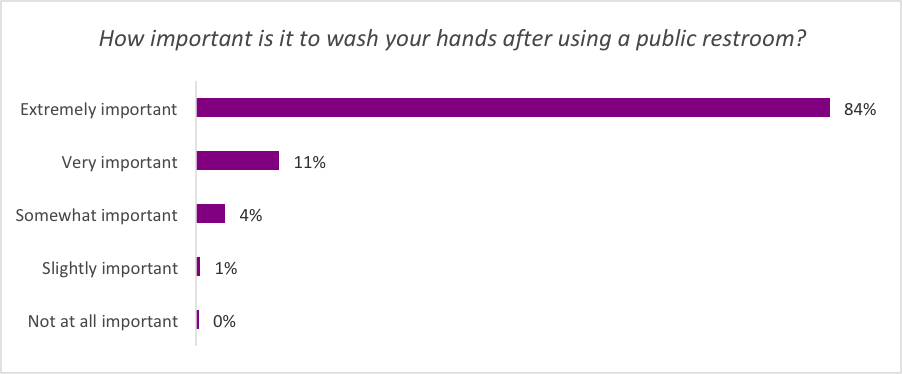
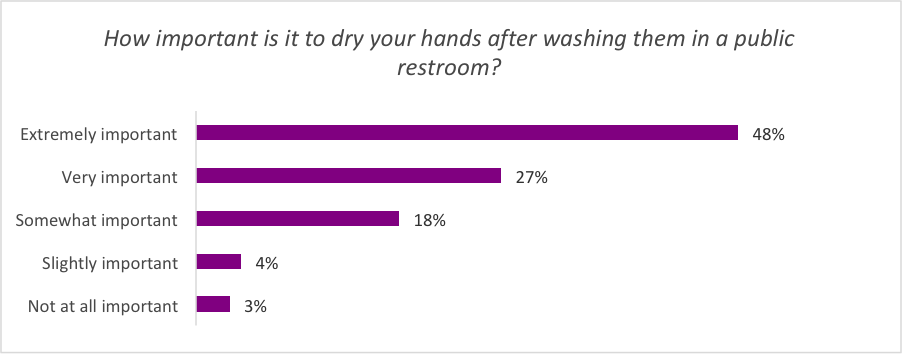
The Solution:
While it seems that Americans may not always prioritize drying their hands, they are already aware of the preferred method of drying from a scientific standpoint, whether they know it or not. When asked to choose from a list of hand drying methods, over half (52%) of Americans say paper towels are the most hygienic way to dry their hands, according to our survey. Additionally, 61% of Americans say they prefer paper towels from a touchless dispenser when drying their hands in a public restroom.
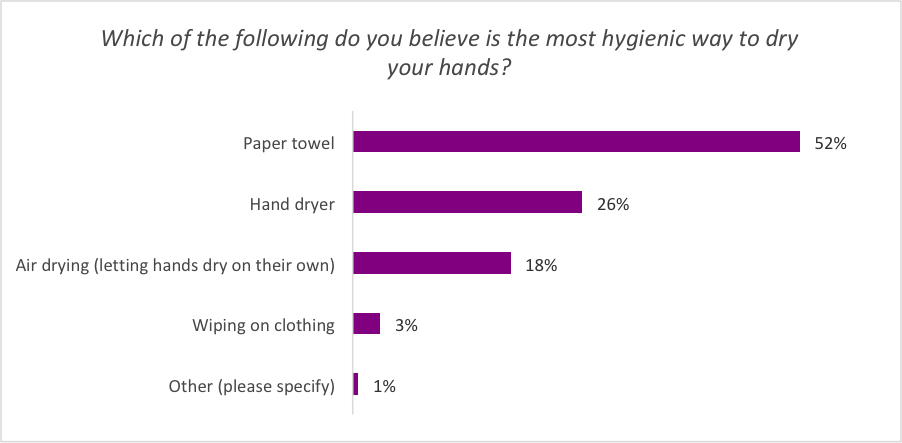
Why do Americans prefer paper towels for hand drying? The top three reasons, according to a survey conducted by Cintas Corporation, are that paper towels dry hands better and faster and provide something to open the restroom door with preventing recontamination when touching restroom surfaces. These consumer insights directly align with scientific research that demonstrates that paper hand towels are the fastest method for drying hands (Redway & Fawdar, 2008) and the only hand drying option that (1) allows you to turn off faucets and open restroom doors without touching restroom surfaces, thus helping to minimize recontamination, (2) allows multiple people at once to dry their hands (Bono & Wang, 2007) and (3) is non-noisy (Redway & Fawdar, 2008).
Now with the COVID-19 pandemic, we are seeing an uptick in education about hand hygiene as Americans are beginning to think more about both parts of the hand hygiene process. Our survey also found that almost three-quarters (73%) of Americans say they are washing their hands more often than they previously were and over half (51%) of Americans say that due to COVID-19, they are giving more thought to how they dry their hands after washing. However, it is still only half the country that believes paper towels are the most hygienic way to dry their hands. Herein lies the opportunity to continue to educate the public about the importance of hand drying with paper towels.
The Paper Towel vs Air Dryer Debate
There has long been a question about which is more effective and hygienic when it comes to drying hands - paper towels or air dryers. Numerous studies have been conducted over the years to find out which is the more superior method of drying hands. One study, in particular, noted that paper towels prevent the spread of 1,300 times more bacteria than jet air dryers over a large height range (0.15-1.65 meters) (Kimmitt & Redway, 2016). This study also demonstrated that at all distances tested up to 3 meters/9.8 feet, paper towels prevented the spread of 190 more bacteria than jet air dryers. Additionally, the immediate environment of the jet air dryer was also 100 times more contaminated by viruses compared to paper towels 15 minutes after use of device. Because paper towels work through water absorption and mechanical friction and not just an airstream, there is a smaller chance of bacteria or viruses being dispersed into the air.
This is just one of the many studies that prove that there is an increased likelihood of the spread of bacteria or viruses by using air dryers. Given the current environment, this could signal a time to make the switch to paper towels and a less air-based, more touchless experience wherever possible, especially restrooms, to increase hand safety on a microbiological level.
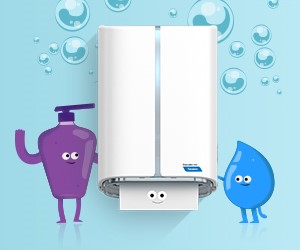
Proper Hand Hygiene Technique
There are 6 key steps to keep in mind for proper hand hygiene. First, start by running hands under warm water. Scrub hands, fingers and nails with soap thoroughly for 20 seconds. Rinse hands under water to remove soap. Thoroughly dry hands with a paper towel to eliminate moisture. Use the paper towel to turn off the faucet and avoid cross-contamination. Finally, use the paper towel one more time to grip the door handle before throwing it away and exiting the bathroom.
The Future:
Where do we go from here? We are already starting to see a change in how we view hand hygiene. Our survey found that 78% of Americans are concerned about touching surfaces in public restrooms and, since the coronavirus pandemic started, 71% of Americans say they are more concerned with touching surfaces in public restrooms.
What should facility managers, building owners and retail proprietors do to help keep employees and visitors safe from the spread of germs and bacteria? Consider incorporating touchless technologies, including toilets, soap dispensers and paper towel dispensers. Our survey showed that the top four features Americans would like to see more of in public restrooms are: (1) paper towels from a touchless dispenser (74%) , (2) touchless ways to enter and exit the bathroom (64%) and (3) automatic toilet flushers and touchless trash cans (59%).
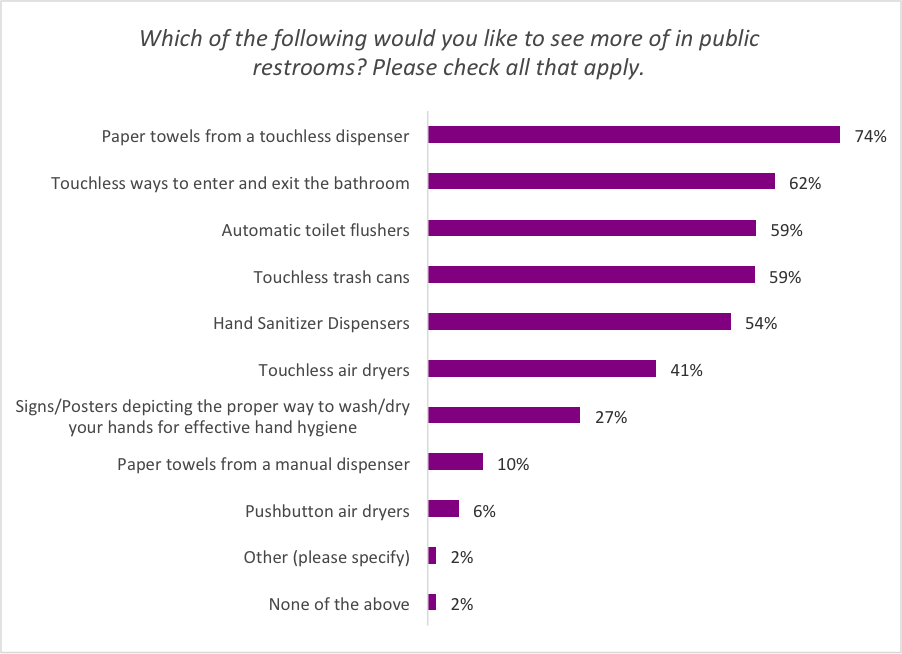
Conclusion:
Research concludes that incorporating proper hand drying techniques as the second step in the hand hygiene process can further prevent the spread of bacteria and viruses such as COVID-19, over just hand washing alone. It is crucial that discussions and education about proper hand hygiene include information about the role and technique for proper hand drying to further prevent the spread of bacteria, viruses, and other infections among our population.
For more information, visit www.cascadespro.com.
About Cascades PRO
The Cascades PRO™ business unit is part of Cascades Tissue Group, a leader in the United States and Canada. Cascades PRO™ offers hand towels, bath tissue, napkins, kitchen roll towels, facial tissue, wipers and dispensers. Sold through distributors, Cascades PRO™ delivers proven, cost-effective hygiene solutions — from bathroom to boardroom to lunchroom to classroom and beyond — with a wide range of product lines that get the job done.
About Consumer Intelligence Snap Poll
This Consumer Intelligence Snap Poll was conducted by G&S Business Communications, on behalf of Cascades PRO, and fielded July 2, 2020, with a representative U.S. sample of 1,066 adults, ages 18+. The sample has been balanced for age and gender using the Census Bureau’s American Community Survey to reflect the demographic composition of the United States.
References
Bono, A., & Wang, J. (2007). Designing A Hand Dryer: Hygiene and Comparative Hand Drying Systems. https://www.sd.polyu.edu.hk/iasdr/proceeding/papers/Designing%20a%20Hand%20Dryer%20Hygiene.pdf
Cintas Corporation. (2017, July 11). New Cintas Survey Shows Consumers Vastly Prefer Paper Towels in Hand Drying Debate [Press release]. https://www.businesswire.com/news/home/20170711005083/en/New-Cintas-Survey-Shows-Consumers-Vastly-Prefer
Huang, C., Ma, W., & Stack, S. (2012, August). The hygienic efficacy of different hand-drying methods: A review of the evidence. https://www.ncbi.nlm.nih.gov/pmc/articles/PMC3538484/
Kimmitt, P., & Redway, K. (2016, January 20). Evaluation of the potential for virus dispersal during hand drying: A comparison of three methods. https://sfamjournals.onlinelibrary.wiley.com/doi/full/10.1111/jam.13014
Patrick, D., Findon, G., & Miller, T. (1997) Residual moisture determines the level of touch-contact associated bacterial transfer following hand washing. https://www.ncbi.nlm.nih.gov/pmc/articles/PMC2809004/pdf/9440435.pdf
Redway, K., & Fawdar, S. (2008). A comparative study of three different hand drying methods: Paper towel, warm air dryer, jet air dryer. http://europeantissue.com/pdfs/090402-2008%20WUS%20Westminster%20University%20hygiene%20study,%20nov2008.pdf
World Health Organization. (2009). WHO guidelines on hand hygiene in health care. https://www.who.int/gpsc/information_centre/hand-hygiene-2009/en/

 The Down and Dirty on Cleaning in Virus Season
The Down and Dirty on Cleaning in Virus Season How Surfactant Use is Expanding in Commercial Cleaning
How Surfactant Use is Expanding in Commercial Cleaning Clean Buildings Conference
Clean Buildings Conference